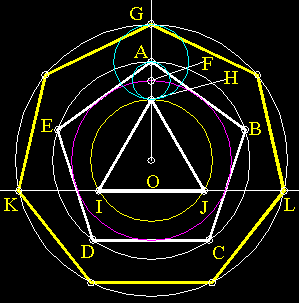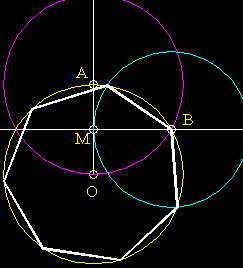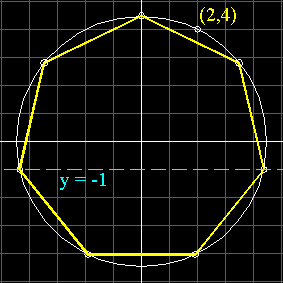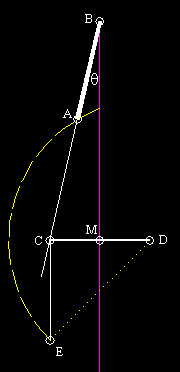Here's a very complicated construction, yet very accurate.
- Draw circle O. Draw ABCDE, a pentagon inscribed in circle O.
- Draw another circle at O, this time inside the pentagon (purple). To do this, find the midpoint of one of the sides
of the pentagon and draw a circle crossing that point.
- Draw OA. OA intersects the small circle (purple) at F.
- Draw a circle at F (cyan) that crosses A. It crosses OA at H. Draw a
circle at A (cyan) that crosses H. Circle A (cyan) crosses OA at G.
- Draw a small circle at O (yellow) that crosses H. Inscribe an equilateral triangle, HIJ
inside that circle (yellow).
- Draw a line through points I and J.
- Draw a circle at O that crosses point G. This circle crosses IJ at points
K and L.
- G,K,L are 3 points of the heptagon. Use them to find the rest!
|

See Nexusjournal for details
|





